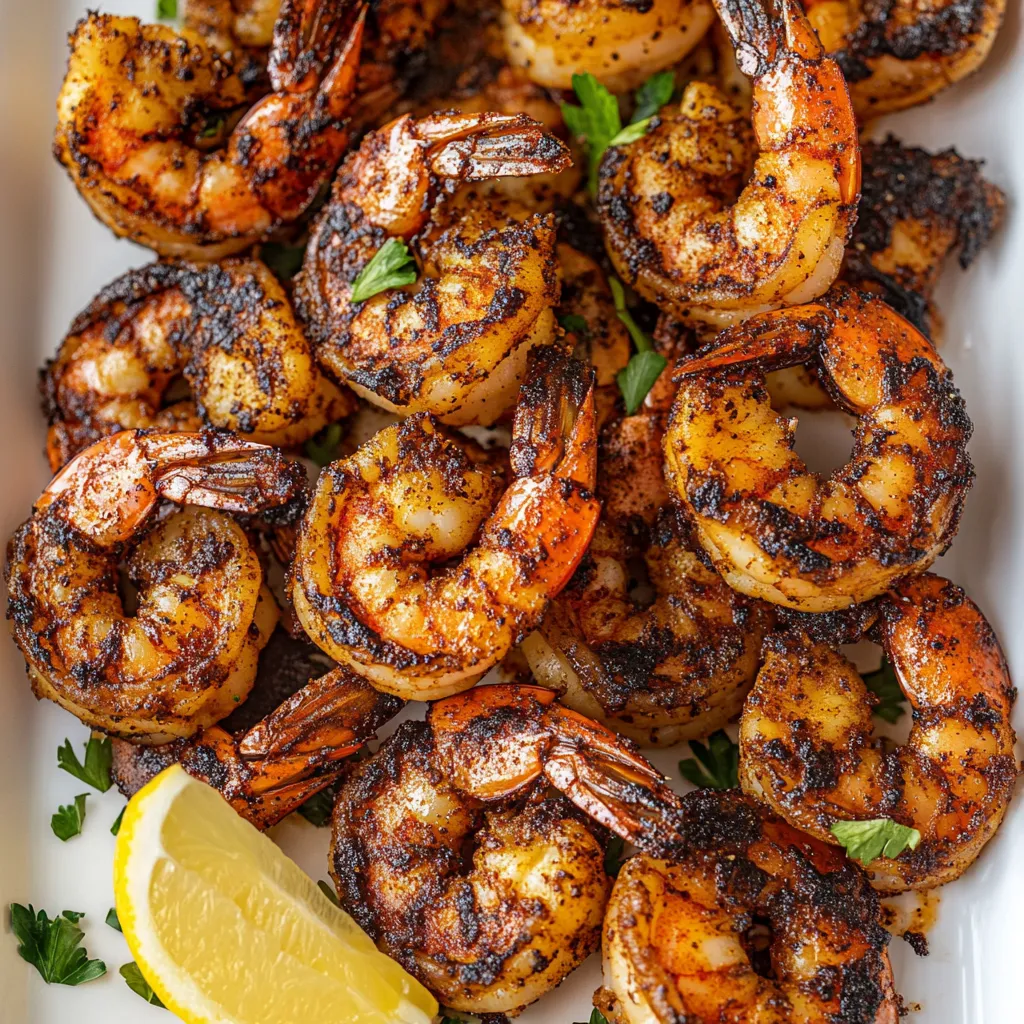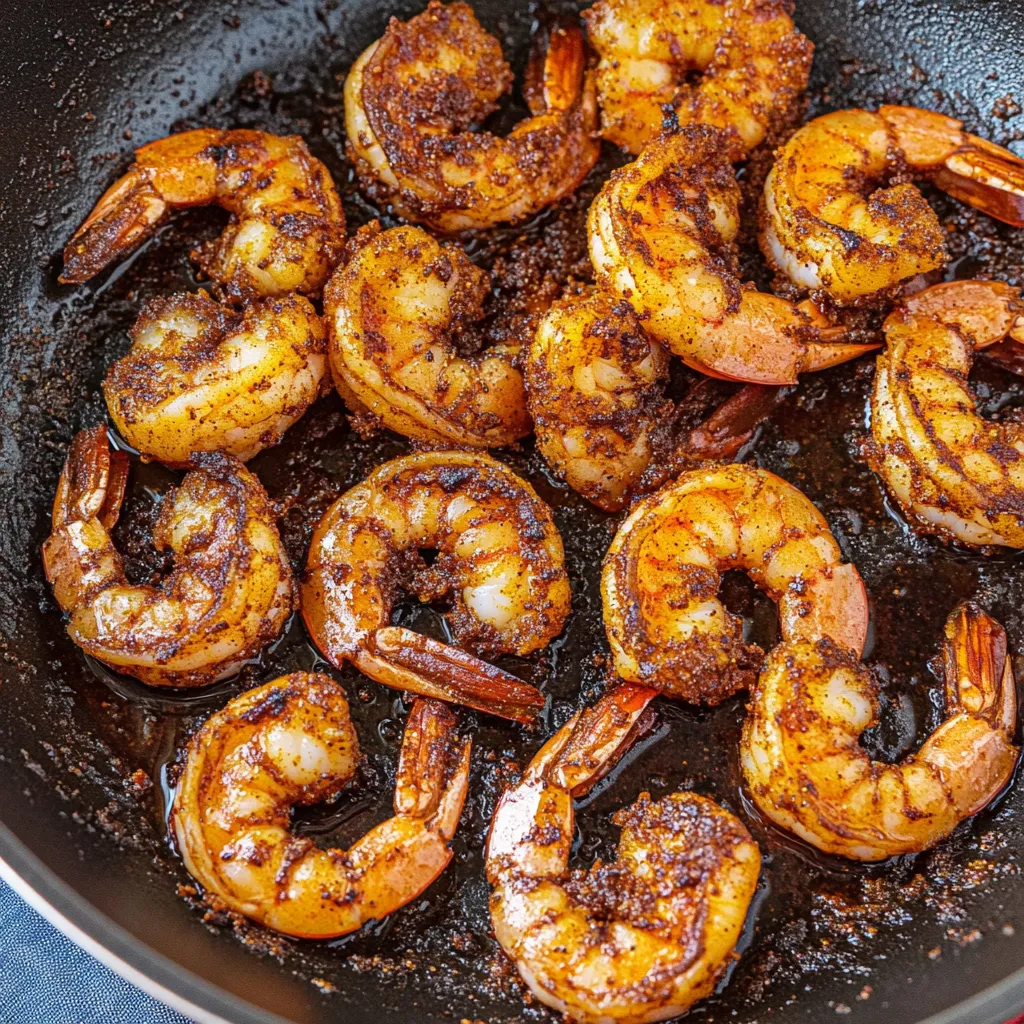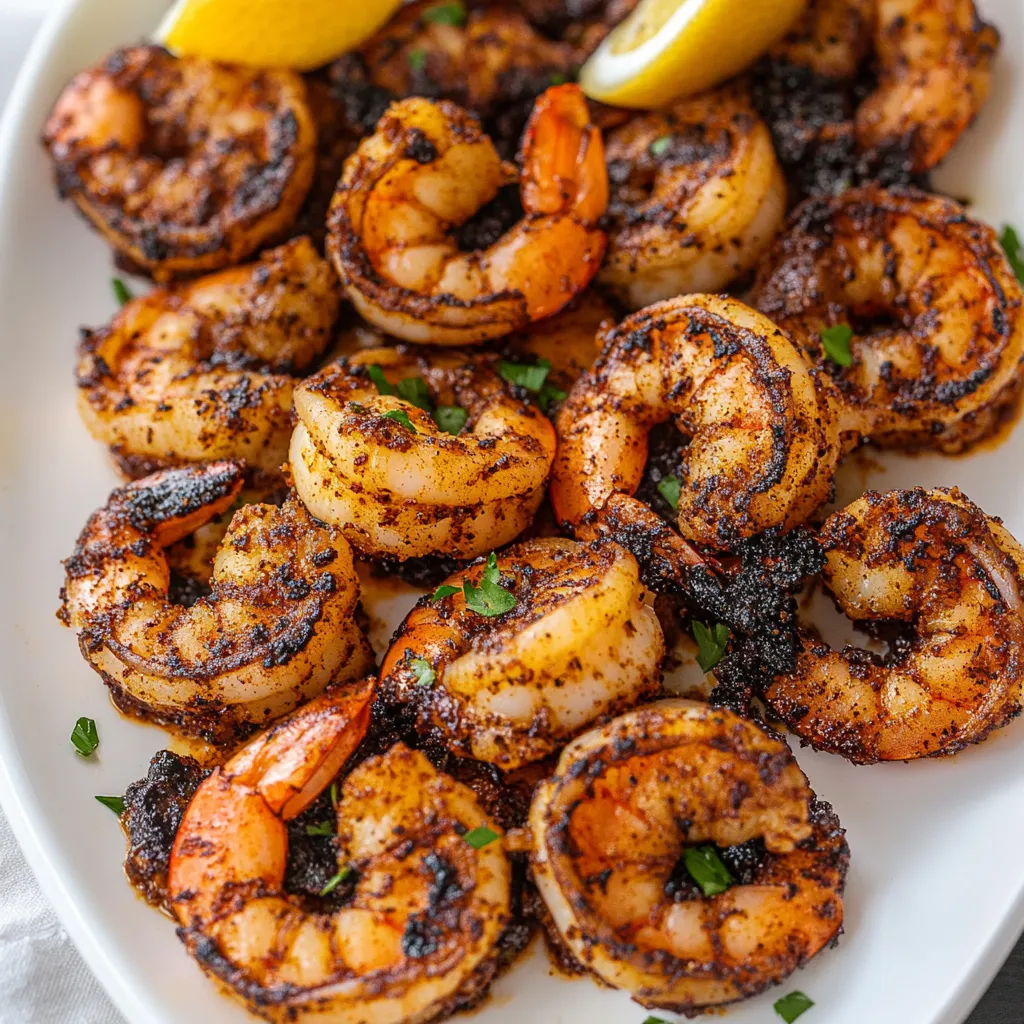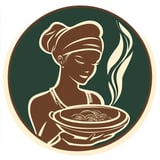 Pin it
Pin it
This blackened shrimp recipe delivers bold Cajun flavors with a spicy, caramelized crust that forms in just minutes of high-heat cooking. The homemade seasoning blend combines chili powder, paprika, and cayenne with brown sugar that caramelizes to create that signature dark exterior without actually burning. Every bite of shrimp stays juicy inside while the outside develops intense flavor and slight crunch that makes these impossible to stop eating.
I started making this after getting tired of bland, boring shrimp dishes. The homemade blackening seasoning makes such a difference compared to store-bought versions where you can't control the salt or heat levels. Now this is my go-to method whenever I cook shrimp because it's so fast and the results always impress.
Essential Ingredients for Success
- Raw shrimp: Use fresh or thawed frozen; peeled and deveined saves time
- Chili powder: Provides base flavor without too much heat
- Paprika: Adds color and mild sweetness that balances spice
- Garlic powder: Creates savory depth throughout
- Brown sugar: Small amount caramelizes to create the dark crust
- Salt and black pepper: Essential seasoning base
- Cayenne pepper: Brings the heat; adjust or omit based on preference
- High-heat cooking oil: Avocado or vegetable oil work best
Complete Step-by-Step Instructions
- Prepare the shrimp properly:
- Rinse 1 pound large shrimp under cold water and pat completely dry with paper towels. Moisture prevents good searing and the seasoning from sticking. If using frozen shrimp, ensure they're fully thawed and drained.
- Mix the blackening seasoning:
- In a small bowl, whisk together 1 tablespoon chili powder, 1 tablespoon paprika, 2 teaspoons garlic powder, 1 teaspoon brown sugar, 1 teaspoon salt, 1/2 teaspoon black pepper, and 1/4-1/2 teaspoon cayenne pepper (adjust cayenne to taste). Mix thoroughly so the brown sugar doesn't clump.
- Coat shrimp evenly:
- Place the dried shrimp in a large bowl. Sprinkle the seasoning mixture over the shrimp. Using gloved hands or tongs, toss the shrimp thoroughly to coat every piece evenly with the seasoning. Don't skip the gloves - cayenne can irritate skin.
- Heat the skillet properly:
- Heat a large cast iron or heavy skillet over medium-high heat for 2-3 minutes until very hot. Add 1-2 tablespoons high-heat oil and swirl to coat. The pan must be hot enough to sear quickly without steaming.
- Cook in batches:
- Add shrimp to the hot pan in a single layer without crowding - they should not touch each other. Cook for 2-3 minutes without moving them so a crust forms. Flip and cook another 2-3 minutes until shrimp are opaque and cooked through.
- Serve immediately:
- Remove shrimp from heat as soon as they're done. Overcooked shrimp become rubbery. Serve hot with your preferred accompaniments.
 Pin it
Pin it
The key to perfect blackened shrimp is high heat and quick cooking. The sugar in the seasoning caramelizes while the spices toast, creating that characteristic dark crust that's full of flavor but not actually burnt. Getting the shrimp completely dry before seasoning makes all the difference.
Understanding Blackening Technique
"Blackening" refers to the cooking method where heavily seasoned food is cooked in a very hot skillet until the spices form a dark, almost black crust. This isn't burning - it's controlled caramelization of the sugar and toasting of the spices that creates complex flavor.
Controlling Heat Levels
The cayenne pepper is what brings spiciness. Start with 1/4 teaspoon if you're heat-sensitive - you can always add more next time. The paprika and chili powder provide flavor without much heat, so the dish is still flavorful even with minimal cayenne.
Achieving Proper Sear
The pan must be hot enough that the shrimp sizzle immediately when they hit the surface. If the temperature is too low, the shrimp will release moisture and steam rather than sear. Medium-high heat is ideal - high enough to sear but not so hot the spices burn.
Preventing Overcooking
Shrimp cook incredibly fast and the window between perfectly done and rubbery is small. They're done when they turn opaque and form a C-shape. If they curl into tight O-shapes, they're overcooked. Remove from heat immediately when done.
Serving and Storage
Serve these immediately for the best texture. Leftovers keep refrigerated for 2 days but won't have the same crispy exterior when reheated. Use leftovers cold in salads or reheat gently in a skillet over medium heat for 1-2 minutes.
 Pin it
Pin it
This recipe shows how simple seasoning and proper technique can transform basic shrimp into something with restaurant-quality flavor. The homemade blackening blend gives you complete control over heat and salt levels while creating those bold Cajun flavors that make the dish memorable.
Frequently Asked Questions
- → Can I make this recipe without the cayenne pepper?
- Yes, you can skip the cayenne completely if you don't like heat. The shrimp will still taste great with the other spices like paprika, garlic powder, and chili powder.
- → Do I need to use fresh shrimp or can I use frozen?
- Both work fine. If using frozen shrimp, just make sure they're raw and fully thawed before cooking. Pat them really dry so the seasoning sticks better.
- → Why are my shrimp rubbery?
- Overcooked shrimp get tough and rubbery. Cook them for only 3 minutes per side over medium-high heat. They're done when they turn pink and opaque.
- → What should I serve with blackened shrimp?
- These shrimp are great over rice, pasta, or a salad. You can also serve them with crusty bread, roasted vegetables, or in tacos with some slaw.
- → Can I prep the seasoning ahead of time?
- Absolutely. Mix all the spices together and store in an airtight container for up to a month. Just toss with olive oil and shrimp when you're ready to cook.
- → How do I know when the shrimp are fully cooked?
- Shrimp are done when they turn pink, curl into a C shape, and are no longer translucent in the center. This usually takes about 6 minutes total.
